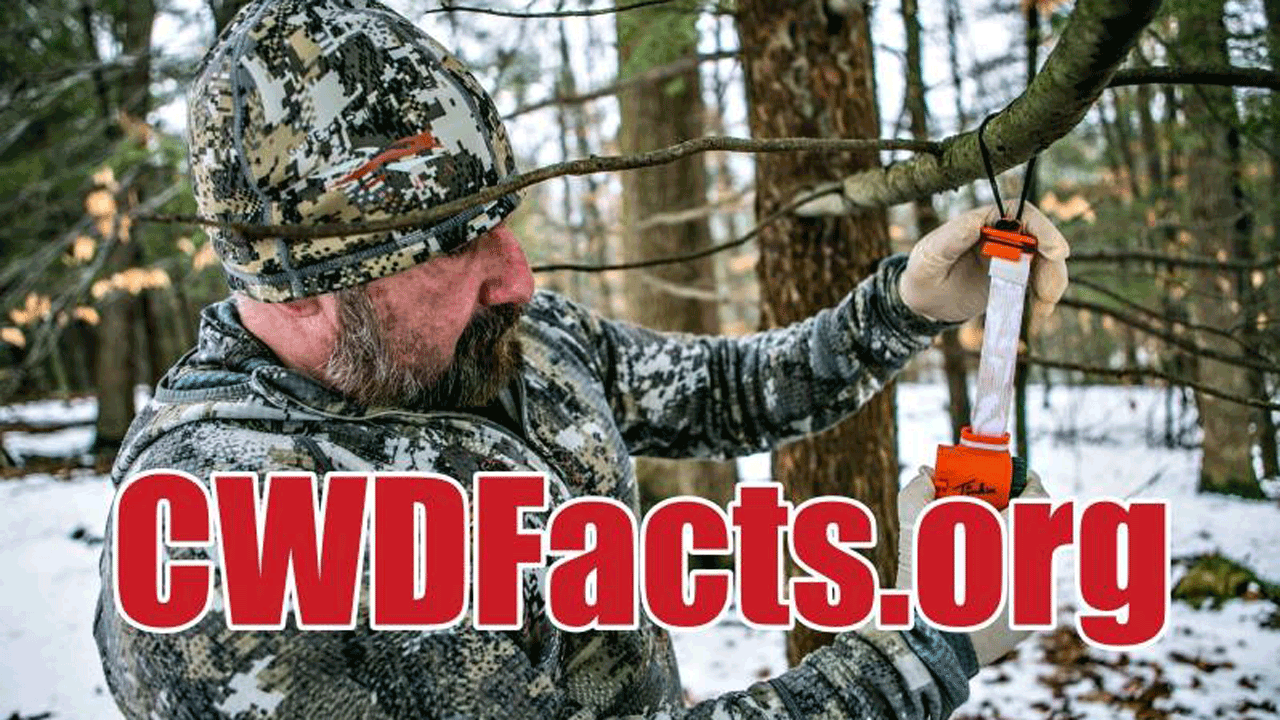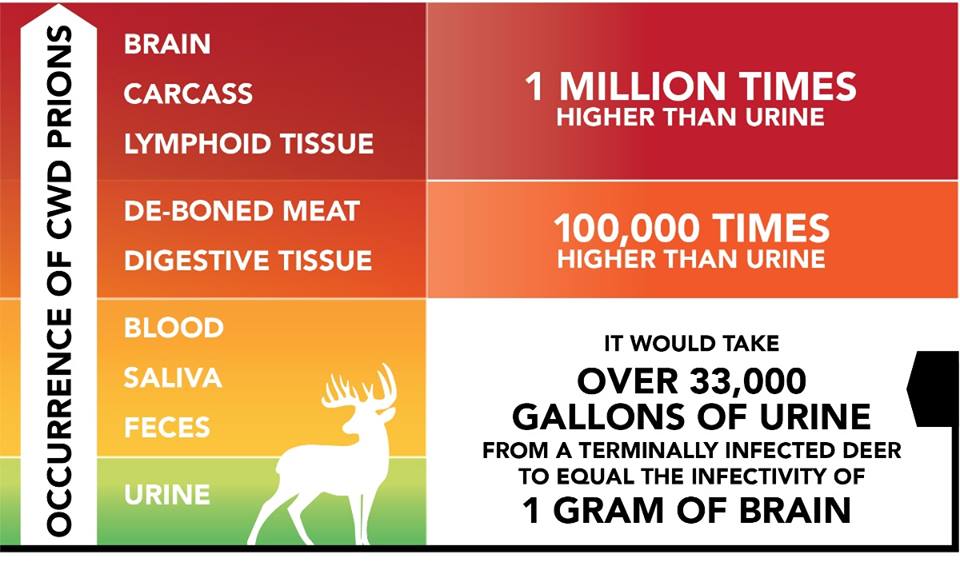One of the hottest topics in the deer hunting community these days is Chronic Wasting Disease (CWD). And as signs of it spreading continue to come to light, there have been a number of knee-jerk reactions for how to stop it. A number of states across the country have quickly tossed out the use of bottled deer urine with the hopes that banning such use might curb the spread of CWD. But what are the chances of bottled deer urine actually transmitting CWD? The crew at Tink’s took this question to the experts, like Davin M. Henderson, PhD. Henderson, from the Department of Microbiology, Immunology, and Pathology at Colorado State University, developed the next generation tests to detect and quantify CWD prions in the saliva, urine and feces of deer and elk. He has authored or co-authored over 13 studies on CWD prions. Henderson was asked, “Can bottled deer urine spread CWD?” His answer might surprise you.
Check out what Henderson has to say in the video below…
The chance of bottled urine transmitting CWD is virtually zero. Frequently considered a catalyst for the disease due to its use in laboratory tests using highly concentrated doses, it is understandable why banning natural urine as a deer lure is regarded as an easy, sure fix to stopping the spread of CWD. The scientists behind those studies point out that their research shows urine is actually the least likely carrier of CWD prions.
Ranking the Infectivity
Barely detectable levels of CWD prions have been found in whitetail deer urine, requiring million-fold or more concentration methods to identify experimentally. The volumes of urine required for experimental infection and detection make the likelihood of urine serving as a natural route of transmission infinitely small.
The experts believe deboned meat and tissues of the digestive system (stomach, intestines) contain up to 100,000 times more CWD prions than found in urine. The brain, carcass (particularly if the carcass contains a brain), and lymphoid tissue contain an exponentially higher number of CWD prions, believed to be 1 million times more than present in urine.
The experts, with over 50 years of collective research knowledge in whitetail health, consider urine the lowest risk for transmitting CWD.

Do you know the facts?
The Facts on CWD
Fact:
CWD in urine can not be detected without amplification. Urine from even clinically sick deer must be highly concentrated in order to produce enough prions to test. The popularly referenced study for CWD in deer required a dosage of urine concentrated TEN TIMES GREATER than normal and had to be injected DIRECTLY INTO THE BRAIN.
Haley NJ, Seelig DM, Zabel MD, Telling GC, Hoover EA (2009) Detection of CWD Prions in Urine and Saliva of Deer by Transgenic Mouse Bioassay. PLoS ONE 4(3): e4848. doi:10.1371/journal.pone.0004848
Fact:
Even under experimental conditions that were extremely unnatural, ONLY 1 IN 10 subjects proved infected.
Haley NJ, Seelig DM, Zabel MD, Telling GC, Hoover EA (2009) Detection of CWD Prions in Urine and Saliva of Deer by Transgenic Mouse Bioassay. PLoS ONE 4(3): e4848. doi:10.1371/journal.pone.0004848
Fact:

Urine-based scents from ATA Deer Protection Program participants are essentially triple-insulated from CWD:
- Due to the inherently low risk of urine transmitting CWD.
- 100% monitoring for CWD at the urine collection facilities further reduces any possible risk.
- Additional requirements of the ATA Deer Protection Program that go beyond USDA standards takes the risk to VIRTUALLY ZERO.
Fact:
Participating urine providers undergo annual inspections from an accredited veterinarian. This includes a review of animal records, state and federal documents, an inspection of the perimeter fencing and physical review of 20% of the herd. Additionally, every third year will include a 100% physical inspection of the herd.
Fact:
ATA Deer Protection Program exceeds USDA standards.
- Greater monitoring for more thorough testing
- Closed to animal importation / severely restricted exportation
- Annual facility and herd inspections
- Double fences to prevent interaction between captive and wild herds (If located within a 30-mile radius of a confirmed CWD positive cervid.)
Participating urine providers undergo annual inspections from an accredited veterinarian. This includes a review of animal records, state and federal documents, an inspection of the perimeter fencing and physical review of 20% of the herd. Additionally, every third year will include a 100% physical inspection of the herd.
Fact:
The 11 participating facilities have been in business much longer than five years and none have ever had a positive CWD finding.
Can bottled deer urine spread CWD? – Conclusion
A quick look at the facts and you can see that the truth about CWD is often misrepresented, to say the least. There’s obviously a lot we still don’t know. And sadly, the response to CWD showing up in an area can often result in far greater damage to the local herd than what the effects of CWD might have been on its own. See more on this hot topic at www.cwdfacts.org. Also, a big thanks to the crew at Tink’s for shedding light on the facts that are behind the CWD issue that continues to spread across the nation.





